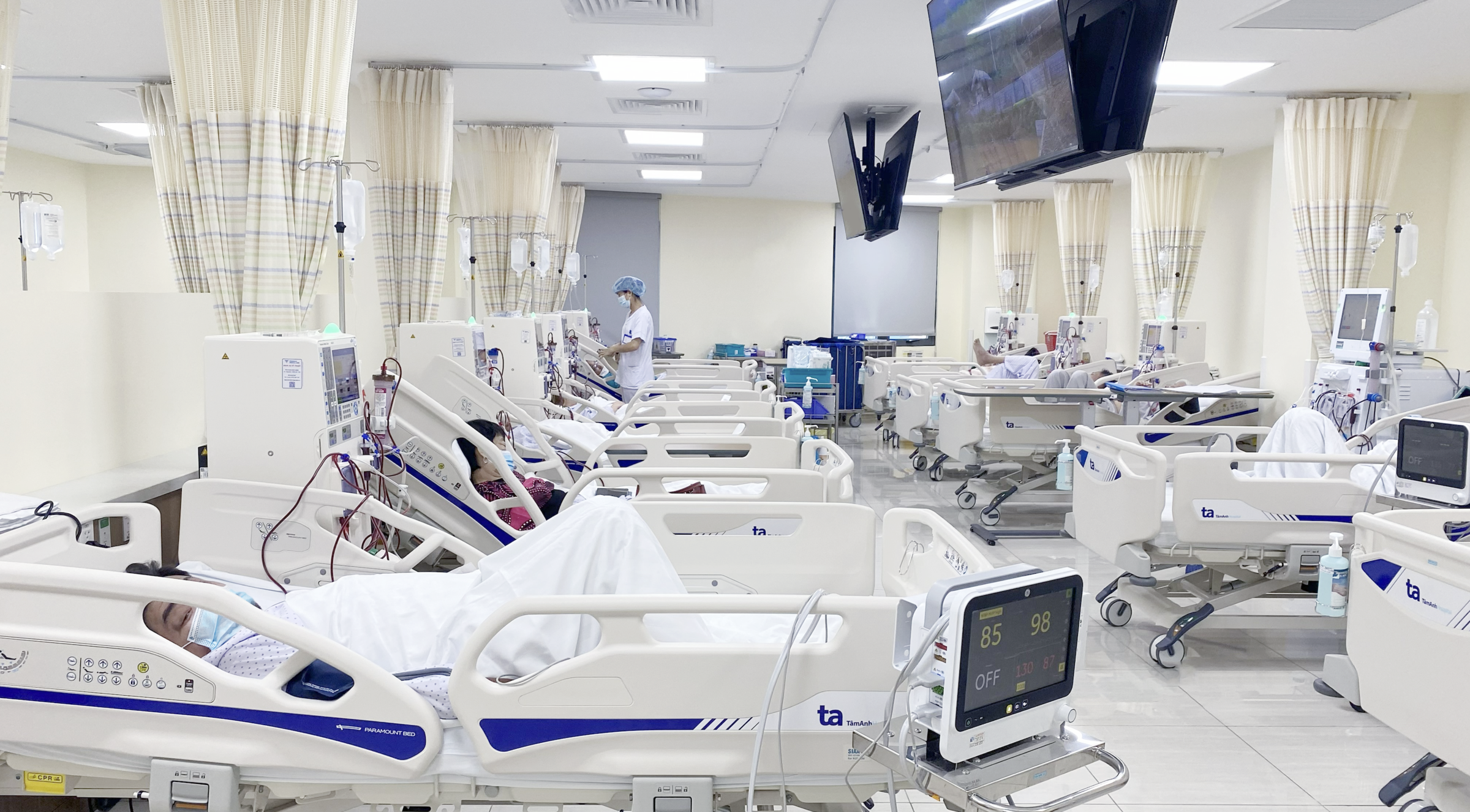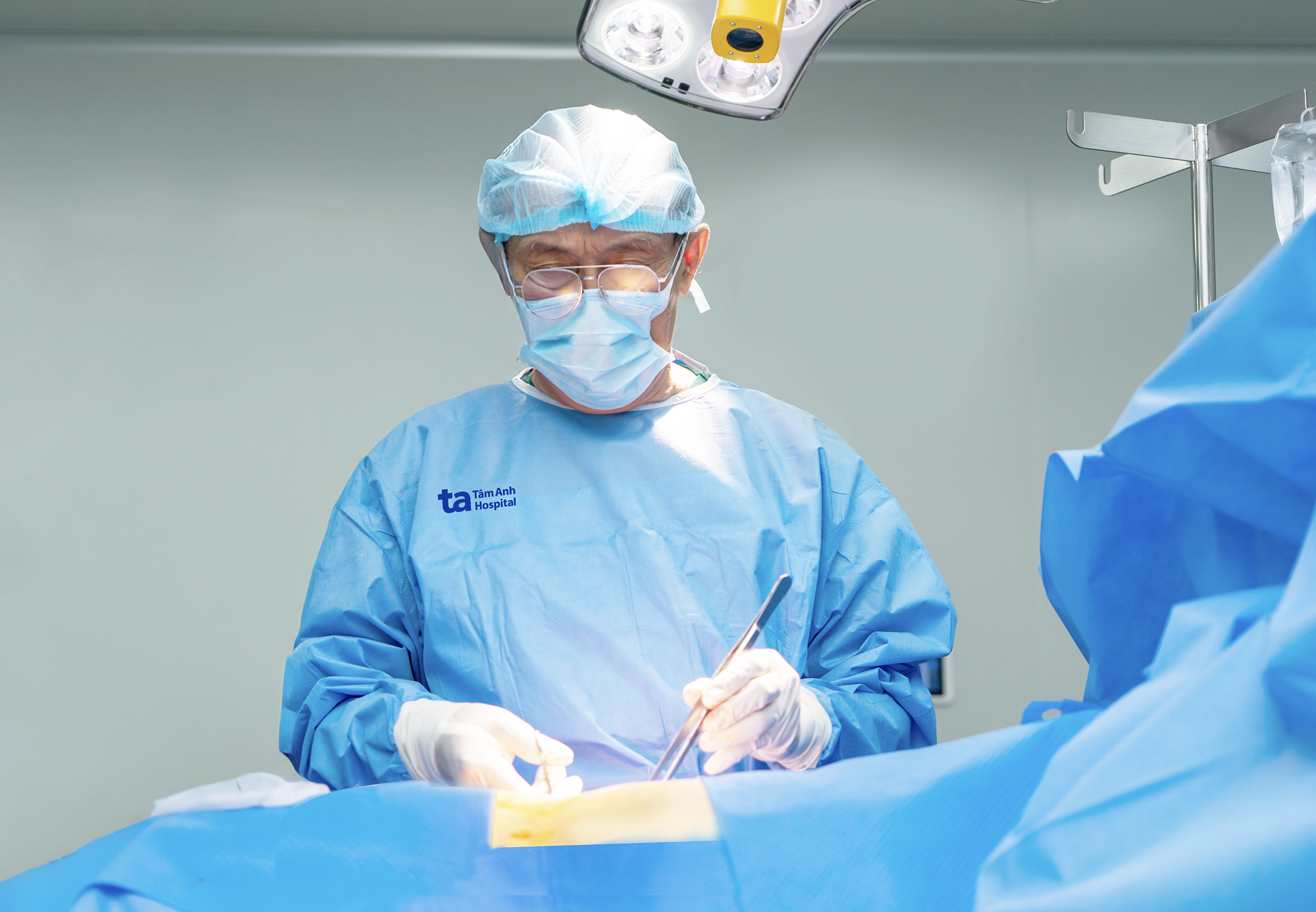In the dialysis room of the Nephrology - Hemodialysis Department, Center for Urology - Nephrology - Andrology, Tam Anh General Hospital, TP HCM, Thien lies reading a newspaper, occasionally responding to the doctor's inquiries. Her arm is connected to a dialysis machine that has become familiar over the past year.
"Stopping dialysis means death, so I try to keep my appointments, rain or shine," she says.
Associate Professor, Doctor Vu Le Chuyen, Director of the Center for Urology - Nephrology - Andrology, said Thien is a special case of regular dialysis because both her kidneys were removed due to large malignant tumors. The surgery was necessary to prevent the cancer from spreading to other organs. She had renal cell carcinoma (RCC), the most common type of kidney cancer, accounting for about 85% of cases. Kidney cancer can affect one or both kidneys, with bilateral cases accounting for 1-2%. In Vietnam, cases like Thien's, where both kidneys are affected and removed, are quite rare, according to Associate Professor Chuyen.
Without kidneys to filter her blood and remove toxins, Thien must undergo dialysis for the rest of her life. According to Doctor Nguyen Thi Hue, dialysis patients typically retain their kidneys, allowing any remaining function to assist in toxin removal and maintain internal balance. However, Thien has completely lost her natural blood filtration ability. Without dialysis, toxins would accumulate in her blood, causing fluid retention, electrolyte imbalance, edema, high blood pressure, and cardiac arrhythmias due to high potassium levels, potentially leading to life-threatening complications.
 |
A patient undergoing dialysis at the Nephrology - Hemodialysis Department. Photo: Tam Anh General Hospital |
A patient undergoing dialysis at the Nephrology - Hemodialysis Department. Photo: Tam Anh General Hospital
Initially, Thien experienced exhaustion, nausea, headaches, and low blood pressure during dialysis. At times, she felt anxious and depressed about her dependence on the machine, becoming pessimistic and "just wanting to be free." With family support and close medical supervision, she gradually adapted.
For a year now, she has maintained her 3.5-4 hour dialysis sessions three times a week. During these sessions, she mostly lies still on a bed or sits in a dialysis chair to ensure the stability of the blood filtration needles. At home, she follows a strict diet, avoiding many foods and drastically reducing salt intake. She has also given up favorite items like bananas, oranges, and coconuts to lower potassium levels, and avoids milk, seafood, and phosphorus-rich foods. Since starting dialysis, her sense of taste hasn't changed, and she enjoys her meals, but eats in moderation to control toxin buildup.
Thirst is a constant challenge for dialysis patients. Especially during the hottest days in Ho Chi Minh City, Thien experiences extreme thirst and chapped lips, but can only sip water. Once, she drank more than usual and suffered acute pulmonary edema, a dangerous fluid buildup in the lungs. Fortunately, she received prompt medical attention.
Since then, she carefully limits her fluid intake to 500-800 ml per day, taking small sips. She avoids salty, spicy, and sweet foods to minimize thirst. Between dialysis sessions, she keeps her weight gain under 1.5-2 kg. She only takes prescribed medications and avoids herbal remedies, traditional medicines, and supplements sold online or from unreliable sources.
On non-dialysis days, Thien exercises by walking, participates in dialysis support groups, and volunteers to maintain a positive outlook. By adhering to her dialysis schedule and diet, her skin remains healthy, and she shows few outward signs of her condition. She hopes her health stabilizes enough for a kidney transplant in the future.
 |
Associate Professor Chuyen performs laparoscopic kidney tumor removal surgery on a patient. Photo: Tam Anh General Hospital |
Associate Professor Chuyen performs laparoscopic kidney tumor removal surgery on a patient. Photo: Tam Anh General Hospital
According to Globocan 2020 data, there are about 1,700-2,000 new cases of kidney cancer in Vietnam each year. Associate Professor Chuyen explained that treatment depends on the stage of the cancer and the patient's health. Main methods include surgical removal, targeted therapy, immunotherapy, radiation, or chemotherapy. In early stages, when the tumor is localized, surgery can be curative. However, with larger tumors, partial nephrectomy might be impossible, requiring the removal of one or both kidneys. If the remaining kidney function is severely impaired or absent, the patient must undergo dialysis.
Around 800,000 people in Vietnam need regular dialysis, but the country only has over 5,000 dialysis machines, meeting about 30% of the demand. At the Nephrology - Hemodialysis Department, Tam Anh General Hospital, TP HCM, about 700-800 patients receive regular dialysis each month. Most adhere to their treatment plans and can maintain their daily activities while undergoing dialysis.
Ha Thanh
*The patient's name has been changed.












